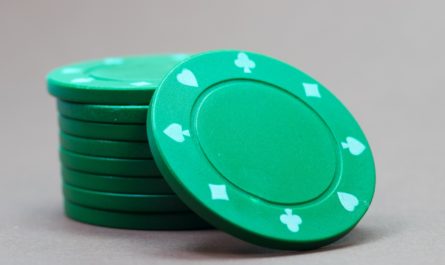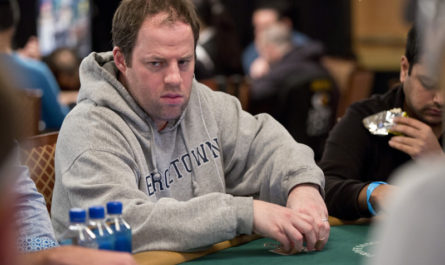One of the most important concepts that most amateur tournament poker players are unaware of is Fold Equity. While there is a mathematical formula for fold equity when you are calculating precise odds, today I want to focus more on the concept, when it is particularly crucial, and how you can incorporate it into your game in key situations, even as an amateur player who may not be calculating odds to the precise percentile at every opportunity.
What is fold equity?
Fold equity refers to the chance that your opponent folds to your bet—that you win the hand without having to show your cards—and the chips you’d win in that scenario.
When is fold equity particularly important?
Fold equity is most relevant when you are in a short (or short-ish) stack situation, when you may consider putting all of your chips in the pot. Let’s take the most obvious type of example: you have 10 big blinds left, you’re in the cutoff, and you look down at A6—would you rather that a player in early-position go all-in, and you call, or you go all in and they fold? The answer is the latter. In the former, the other player certainly could have a hand like KQ or pocket 5s, where you may have a solid chance to double your stack; but they also could easily have a hand like AJ or pocket 9s, where you are a substantial underdog. In the latter scenario, any of those hands are possible for your opponent as well, BUT you have an additional way to win the pot—everyone folds. That is fold equity. It is for this reason that we would often prefer to move all-in with a weaker hand than to call someone else’s all-in with a stronger hand. For example, I would rather go all-in with T9s from the button for 12 BBs than to call off my last 12 BBs from the button with QJo when an earlier-position player has moved all-in. Sure, QJo is the better of the two hands, but I’d prefer to have the fold equity and a decent chance to take down the blinds/antes without having my whole stack at risk.
What other scenarios might fold equity be a crucial component?
Other than being short-stacked, the most critical spots where fold equity considerations come into play are in big pots, prior to the river, when you have a big draw. Consider the following scenario: you have AKcc and head to the flop heads-up, after multiple raises went in pre-flop. The flop comes QT4cc, giving you no made hand but draws to both the nut flush and the nut straight. The pot is already 30 BBs, and your opponent leads out for a bet of 20 BBs. You have a stack of 60 BBs. Given that you have 12 outs to make the nuts, you certainly are getting a reasonable price to make a call, but is there a better play?
Given that you don’t have a made hand, it’s unlikely that your opponent will show down with a weaker hand, so in order to win the hand if you call, you need to make your straight or your flush (or possibly an A or a K for a pair may occasionally be good enough to win this pot). If you move all-in, you still may win the pot if your opponent calls and you make your flush or straight, but also have fold equity—you could win a sizable pot and get your opponent to fold a hand that is ahead at the time (like AQ, KQ, JJ) without even having your stack at risk.
One of the keys to success in no-limit Texas hold’em tournaments is to understand (and implement) the notion that you want to put your opponents to big decisions for all of their chips, and you want to avoid having to make big decisions for all of your chips. Understanding when you can use fold equity to your advantage—when you may very well win a pot anyway (but also may bust from the tournament) and can instead give yourself a chance to take it down without having your tournament life at risk (while still maintaining a strong risk/reward if you do get called)—this is a crucial aspect to tournament poker success.




